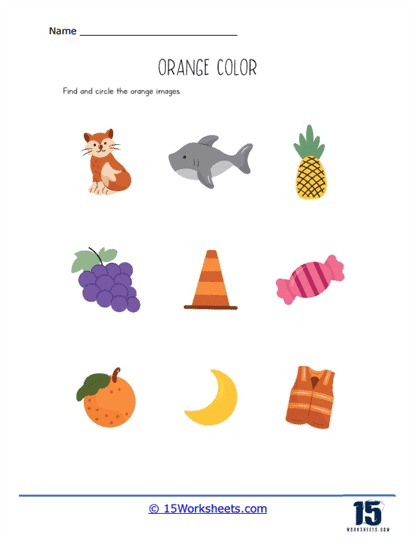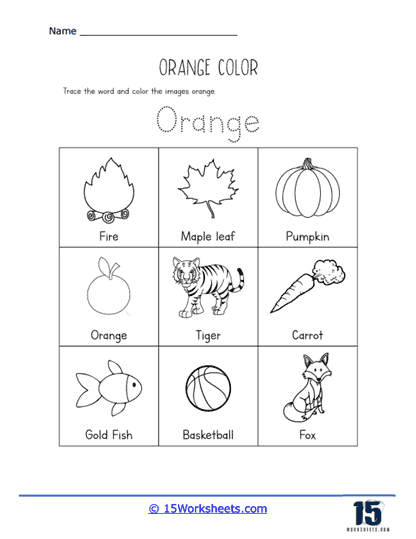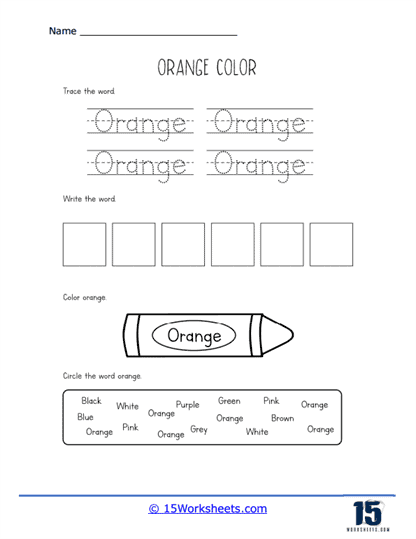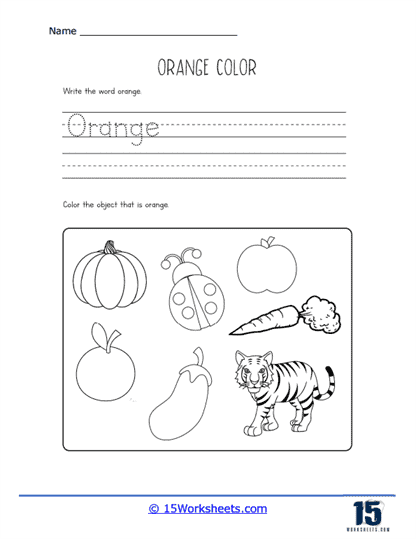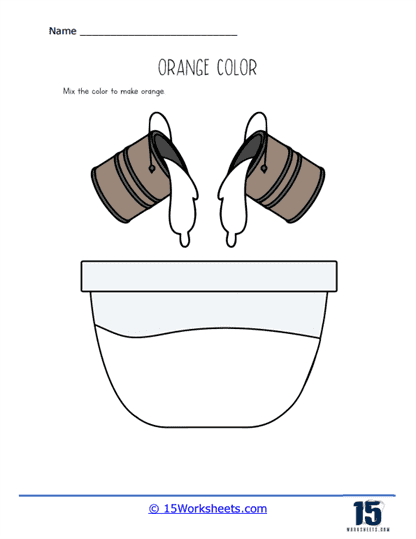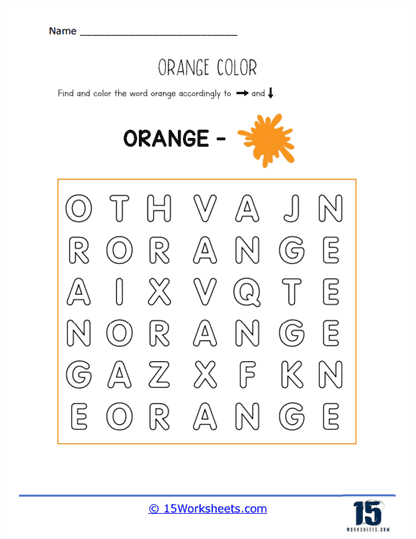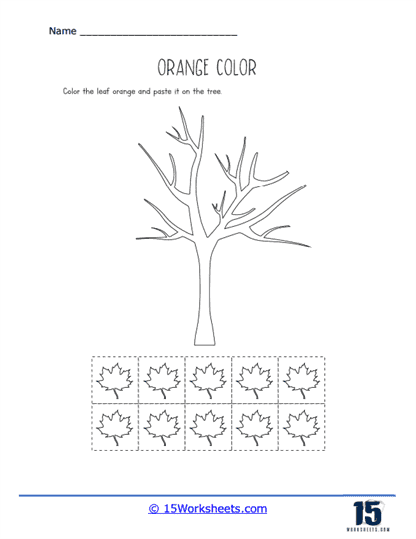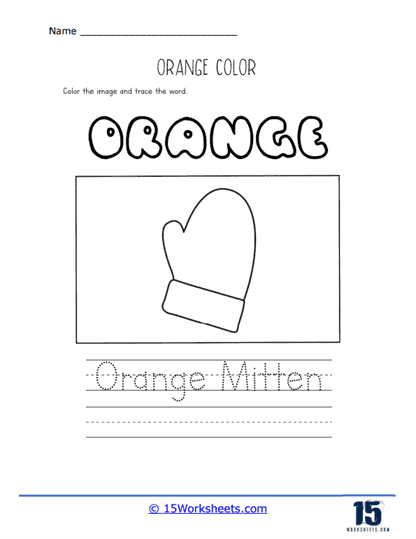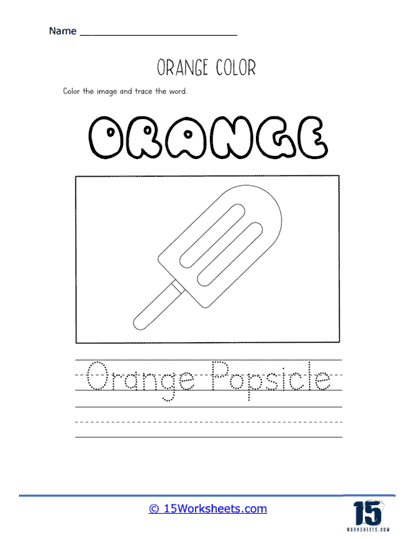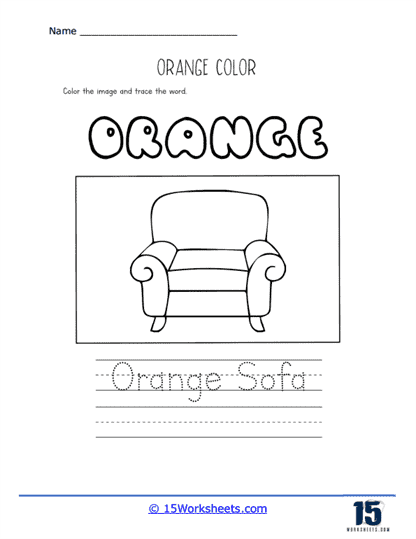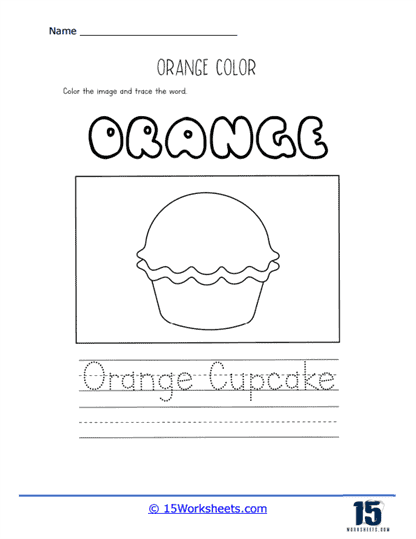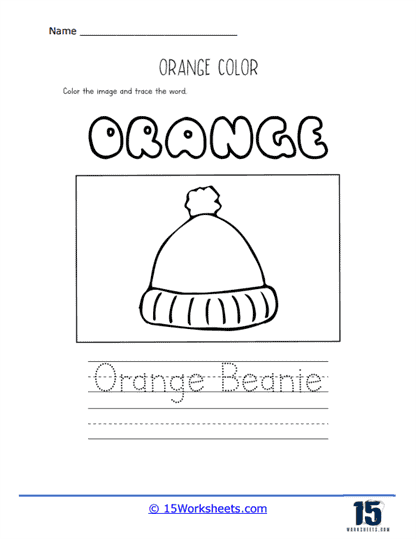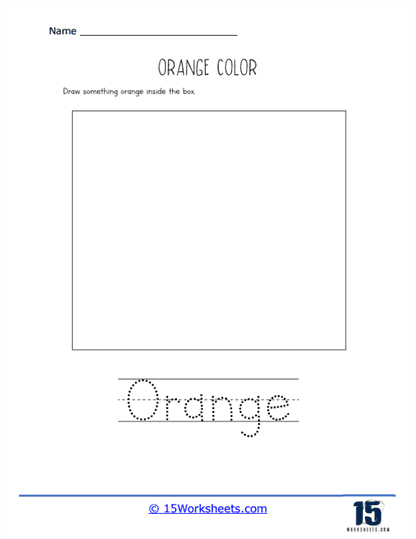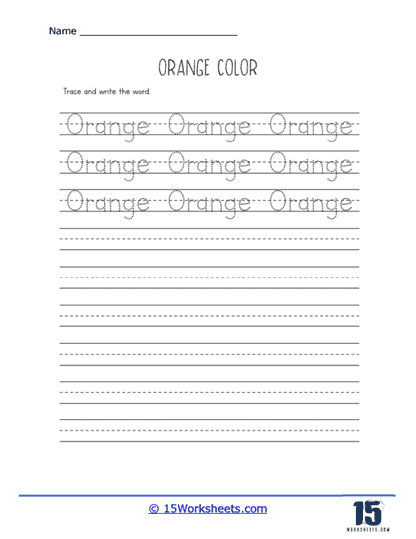Orange Worksheets
All About These 15 Worksheets
Dive into the lively world of the color orange with this comprehensive series of Kindergarten worksheets. This collection is designed to introduce young learners to the concept of colors, specifically on the color orange. Through a variety of interactive exercises, students will develop familiarity with the color orange. These worksheets also help students develop their color recognition skills, enhance their vocabulary, and engage in hands-on activities that promote creativity and critical thinking. Through these worksheets, students will:
- Practice identifying and coloring objects that are orange, reinforcing their understanding of the color and developing visual discrimination skills;
- Engage in tracing exercises that focus on tracing the color word “orange” and writing it independently, promoting letter formation and word recognition;
- And learn about objects and symbols commonly associated with the color orange, fostering their vocabulary development.
Through this engaging series of Orange worksheets, young learners will deepen their understanding of colors while specifically exploring the characteristics and associations of the color orange. By participating in a variety of activities that involve color recognition, tracing, writing, drawing, and coloring, students will develop their visual discrimination skills, enhance their vocabulary, and foster creativity.
These worksheets also provide opportunities for hands-on exploration, problem-solving, and cognitive development. By engaging with these exercises, students will develop a love for colors, strengthen their fine motor skills, and cultivate an appreciation for the unique qualities of the color orange. Ultimately, this collection serves as a stepping stone for future color exploration and lays the foundation for a lifelong appreciation of art, creativity, and self-expression.
What is the Color Orange?
Orange is a vibrant and warm color that lies between red and yellow on the visible light spectrum. It is a secondary color, created by mixing equal parts of red and yellow. Orange has various properties, cultural meanings, and applications, making it an interesting and versatile color.
Orange comes in numerous shades and tints, ranging from light pastels to deep, rich hues. Adding more red or yellow to the mixture can create shades such as coral, apricot, or burnt orange. Mixing orange with white or black produces lighter tints or darker shades, respectively.
Orange is often associated with energy, warmth, and vitality, as it is reminiscent of the sun, fire, and autumn leaves. It can represent creativity, enthusiasm, and optimism. In some cultures, orange has spiritual or religious significance. For example, in Hinduism and Buddhism, orange is often worn by monks and is associated with wisdom, knowledge, and sacredness. In various global contexts, orange is used to represent safety and visibility, as seen in traffic cones, life vests, and construction signs.
Throughout history, artists have used orange pigments derived from natural sources, such as ochres, realgar, and orpiment. Synthetic orange pigments, like chrome orange and cadmium orange, were later developed for use in art and design. Orange is often employed in paintings, textiles, and graphic design to create a sense of warmth, energy, and visual interest. In color theory, orange is a complementary color to blue, which means they can be combined to create strong contrasts and harmonious color schemes.
Orange can be found in various natural objects and living beings. It is present in fruits like oranges, apricots, and mangoes, as well as in vegetables like carrots, pumpkins, and sweet potatoes. Minerals such as carnelian, selenite, and spessartine garnet exhibit orange hues. Some animals, like tigers, monarch butterflies, and certain birds, have orange coloration for various purposes, such as camouflage, communication, or attraction.
In science and technology, orange pigments and dyes have been synthesized for various applications, such as paints, inks, and textiles. Orange is also used in technology, with orange LEDs and lasers being developed for use in electronics, communication, and entertainment.
Several idioms and expressions in the English language feature the color orange, such as “orange is the new black” (referring to a new trend or fashion) and “apples and oranges” (used to describe two things that are fundamentally different and cannot be compared).
In summary, orange is a warm, energetic, and versatile color with diverse symbolic meanings, cultural significance, and uses in art, design, fashion, science, and technology. Its presence in nature and its association with energy, warmth, and creativity make it an influential color in various aspects of human life.

